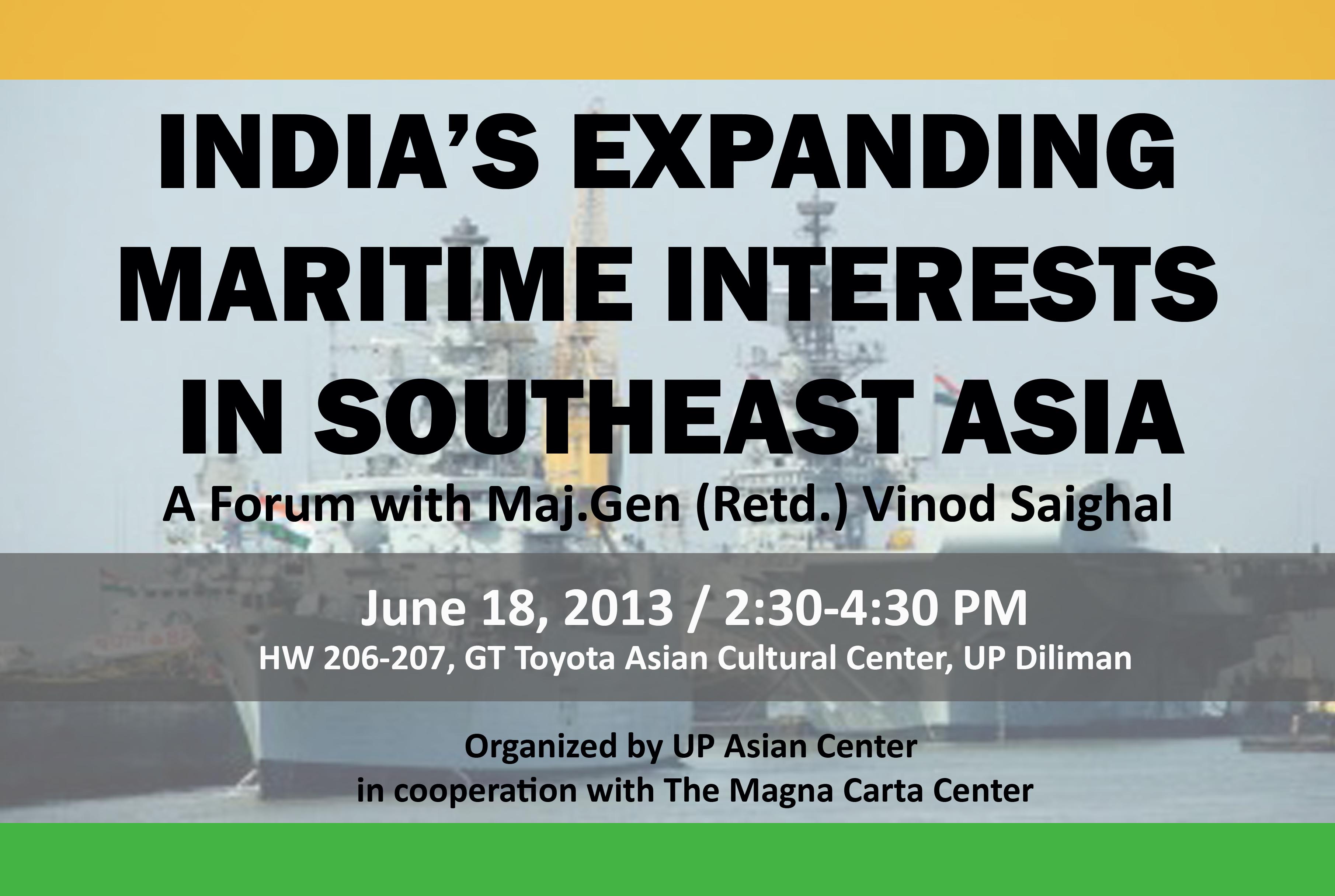
Gen. Saighal is presently Executive Director of Eco Monitors Society, an NGO involved in demography and ecology issues. As a respected and former high ranking military official, he has written a number of books on security issues, including Restructuring South Asian Security, Restructuring Pakistan, Dealing with Global Terrorism: The Way Forward and Global Security Paradoxes: 2000-2020.
We would most appreciate if you can confirm your participation/attendance on or before June 14, 2013 by calling us at 981-8500 loc 3586, or by sending us an email at This email address is being protected from spambots. You need JavaScript enabled to view it..
CAN INDIA PROVIDE BALANCED MULTIPOLARITY IN EAST AND SOUTHEAST ASIA?
By
VinodSaighal
Abstract
Following the US pivot towards Asia-Pacific there appears to be inevitability about an Indian pivot to the East of the Malacca Straits; moving from its Look East policy started in the early 1990s to an Indo-Pacific projection (former Secretary of State, Hillary Clinton reportedly called it the Indo-Pacific, possibly to urge India on). In the two decades since the Look East policy first came into play, India was generally content to look only towards south-east Asia. Australia and East Asia were not really the focus area for India during that period. That India is now definitely committed to projecting further East into the South China Sea and beyond is no longer in doubt. India’s maritime projection eastward has so far been restricted to maritime activities related to trade and exploration for hydro-carbons wherever it has been invited to participate by the host country, as in the case of Vietnam. As to whether it is a prelude to the positioning and strengthening of a vigorous presence is difficult to say with any certainty at this juncture. Much will depend on China’s military assertion in the region as well as the projection of Chinese navy into the Indian Ocean to either balance or rival India’s historic primary in the Indian Ocean. If and when India does move in more meaningfully into the maritime spheres claimed exclusively by China as its core interest the chances of tensions heightening between the two Asian giants becomes a distinct possibility. Whatever the case, a greater presence by the Indian navy beyond the Malacca Straits would be welcomed by practically all the nations of southeast Asia as well as Japan and South Korea. The paper goes on to discuss the circumstances under which India could become the multi polar balancer to provide much needed stability; in the process outlining several pathways that could eventually lead to greater 'regional' stability from a more ‘meaningful’ Indian presence.